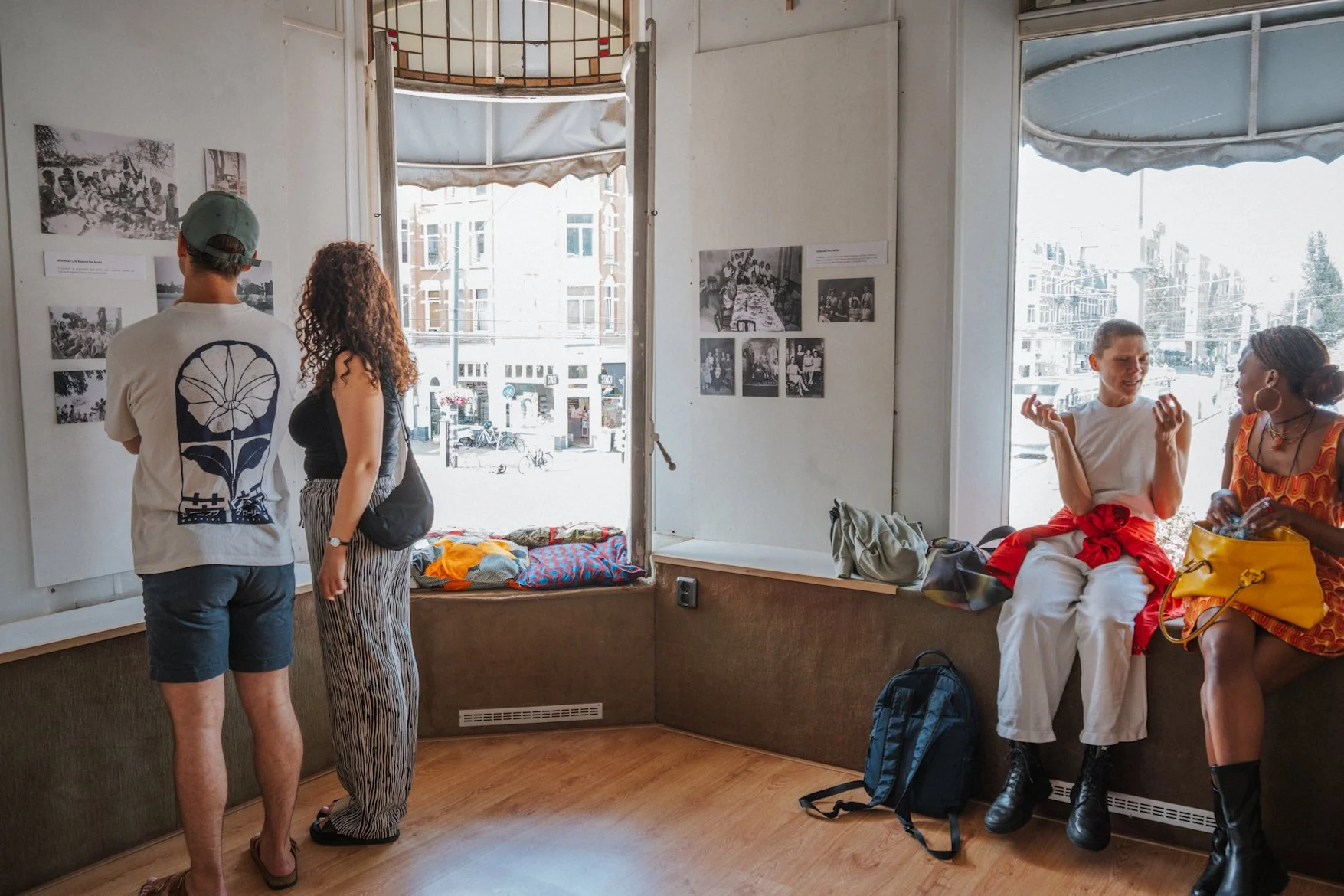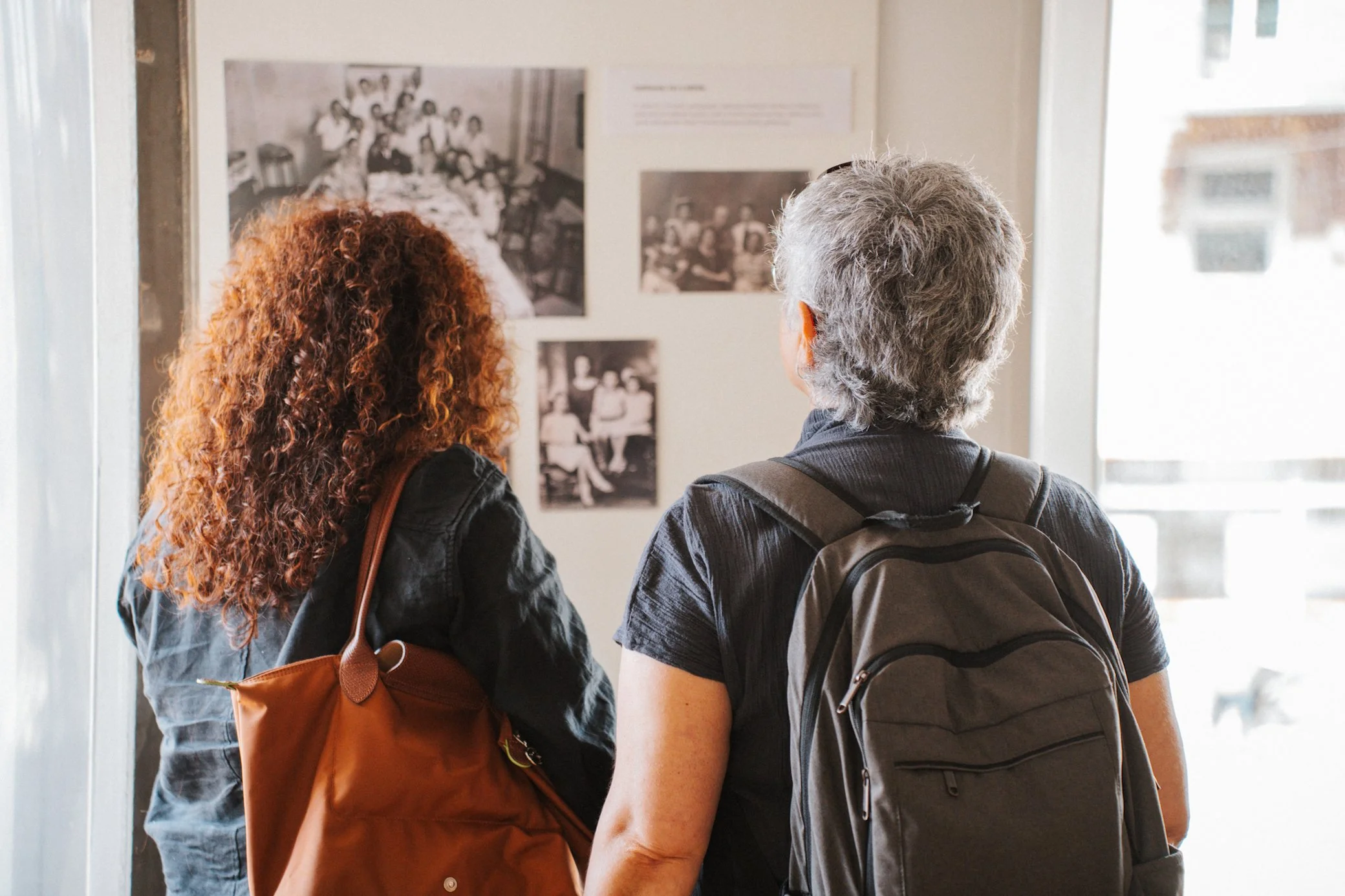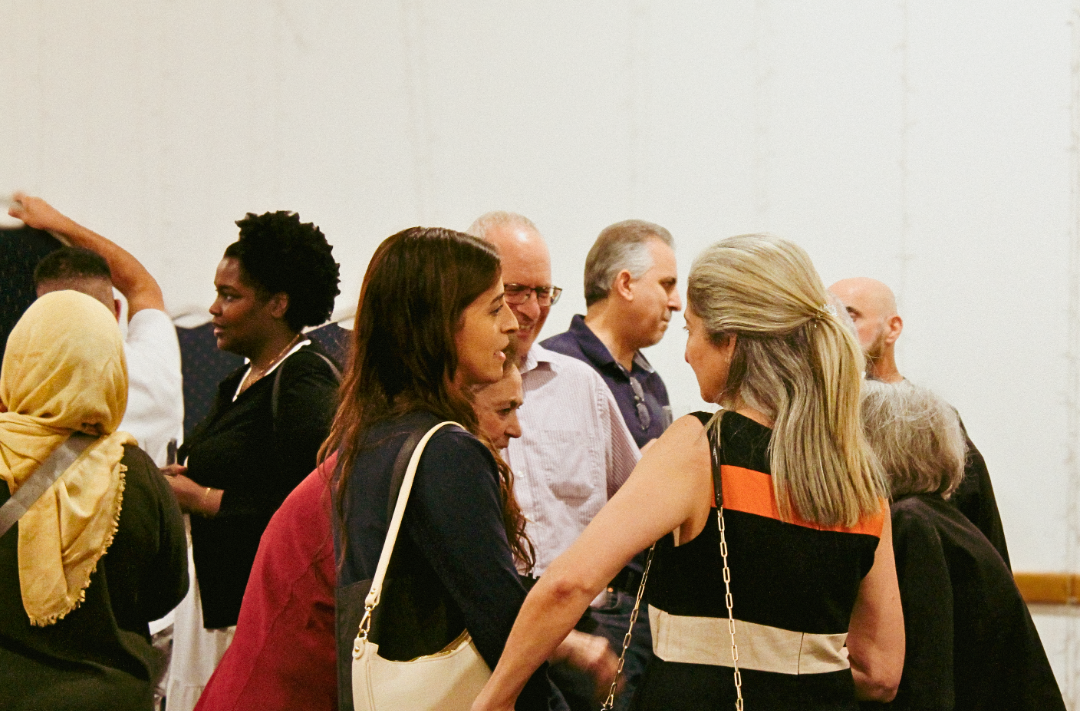Armenian Life in Colonial Sudan: Photo Exhibition and Talk
In the nine months since our launch, sudanahye has uncovered a wealth of material that at first seemed elusive. Through oral histories with Sudanese-Armenians, through research in archives stretching from Durham to Cairo, and through family photographs sent to us from as far afield as Australia and Canada, the project has begun piecing together a story of this forgotten yet unique community. Much of our work has been shared through blogs and social media, but in August 2025 sudanahye made its first step into the physical realm with events in Amsterdam and London.
A step into the physical realm
The exhibition, titled Armenian Life in Colonial Sudan, offered a rare glimpse into the lives of Armenians in Sudan during the Anglo-Egyptian period (1899–1956). Amsterdam’s event, hosted by Move Collective, took place on August 9th; London’s, hosted by Hamazkayin UK, followed on August 16th.
The exhibition featured 32 photographs sourced from Sudanese-Armenian families, institutional archives, and private collections. The exhibition was curated by Fatima Salah, the project’s archivist and a University of Khartoum student displaced to Cairo since the war in Sudan. War has forced millions of Sudanese to flee, many losing not only family members, livelihoods and homes but also their photographs. Sudanese-Armenian migration in earlier decades meant that precious photographs have been preserved via exile. These photographs now stand as fragments of both Sudanese and Armenian history but also as the visual cornerstone of the Sudanese-Armenian legacy.
The long journey south
The exhibition was accompanied by a talk by Project Director, Vahe Boghosian, on the Armenian community in Sudan from 1899 to 1956 as a context to the exhibition. It began with the journeys of three early Armenian pioneers: Paylag Derounian, who wrote of his fifty-day trek to Omdurman in 1899 to trade with the British army before settling in Omdurman and establishing his business. Kevork Djerdjian, who travelled from Arabkir to Alexandria and then Khartoum to work for the Kurkjian brothers before setting up his own business and becoming the beating heart of the Armenian General Benevolent Union (AGBU) Sudan in the 1910s and 20s. And finally, Sarkis Tarpinian who moved to Malakal with the assistance of Sarkis Chirkinian who was then a trader in nearby Kodok, both these places now in South Sudan far from any semblance of an Armenian community - he established a general store selling groceries and items to the Shilluk tribe. These early Armenian traders demonstrated resilience often living isolated across Sudan’s distant geographies, adapting to harsh climates and difficult conditions to secure commercial success with the hope of enriching their economically deprived indigenous homeland in the Ottoman Empire. This hope faded with the Armenian Genocide - there was no longer a homeland to return to, and Sudan shifted from a place to make a livelihood to a place to live.
Armenian life in Colonial Sudan
With more Armenians arriving following the Genocide, this group of Sudanese-Armenians traders transformed into a community. Refugees were taken by distant family members or by adopting orphans. In addition to trade, the community began to occupy a variety of roles in Khartoum that was modernising in Britain's colonial image. They translated their commercial success into a vibrant and cosmopolitan community life with schools, churches, and community spaces. By independence in 1956 they had become an established part of Sudan’s social fabric. Yet their position was also shaped by colonial hierarchies, a system which made Sudan a unique place to be Armenian. More privileged than Sudanese “natives,” but never equal to the British rulers - the Armenians navigated the realities of colonial Sudan to find belonging, at first in private and later in public spaces. This journey of belonging was the theme of Fatima Salah’s photograph curation which was reinforced by the presentation of additional documents, photos, records, and a rare 1956 film of Armenian dance in Khartoum as part of the Women’s Union anniversary celebrations.
Rediscovery and reunions
In Amsterdam, the event was the first exhibition held at Move Collective, a new community space for neighbours and newcomers. The event was attended by many of the Move Collective’s established community, Armenians from across the Netherlands, but also many more who were interested in this unique event.
In London, the events were not just history lessons but a moment of reunion and reflection. This was the first time ever an event has been dedicated solely to the Sudanese-Armenian community and at the event in London, one of the main homes of the Sudanese-Armenian diaspora, old friends met for the first time in decades, attendees found long lost relatives, and older members of the respective communities shared memories of their beloved Sudan. Members of the wider Sudanese diaspora were also in attendance, engaging with a part of their country’s history which only the older generation remember but now the newer generations can also engage with. With continued war and amidst a humanitarian crisis, images of co-existence along the Nile carried a bittersweet nostalgia and provided a moment of reflection, a change from the usual narrative of war and destruction. The atmosphere was one of discovery and reunion. Attendees left with postcards, originally made by Sudanese-Armenian photo studios in Khartoum, reprinted and distributed as nostalgic keepsakes of an event - a uniquely Sudanese-Armenian creation.
For sudanahye, these first events mark only the beginning. An opportunity to share research and talk to the project’s communities is a special occasion. But more importantly the event translated memory and research into a legacy as a physical event which will be remembered. Similar to Sudanese-Armenians reminiscing nights at the Armenian Club in Khartoum, those in attendance will remember these events as part of the legacy of the Sudanese-Armenian community. By being able to share this legacy, the project transcends a website or a social media page and becomes part of the history of the Sudanese-Armenian community - a history we will continue to uncover and share with you.
Thanks to all those who assisted in the organising of the event including Hamazkayin London and Move Collective in Amsterdam and a special thanks to all those who attended and made the events unforgettable. We have received multiple requests from people who were unable to attend or not based in London or Amsterdam who want to see the exhibition and the talk online. We are working on bringing the exhibitions to more locations and once this is completed we will make the exhibition and the talk available online - we appreciate your patience in the meanwhile.





